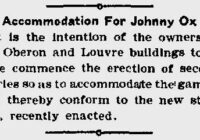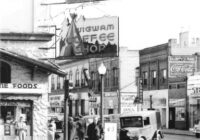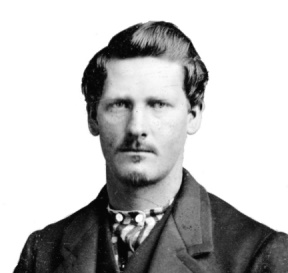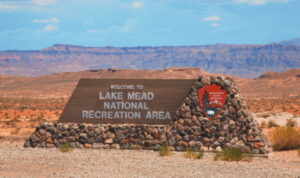|
Listen to this Gambling History blog post here
Getting your Trinity Audio player ready...
|
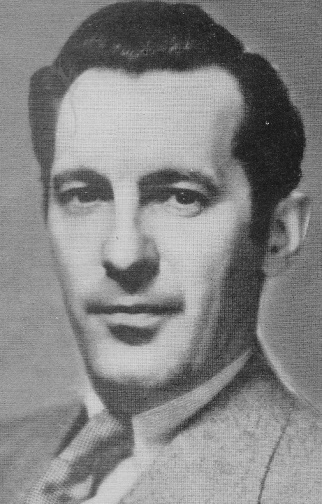
Martin Mooney
1935-1936
In about mid-December 1935, New York newspaper reporter Martin Mooney (1896-1967) faced serving his jail sentence during the upcoming holidays. His offense? Contempt of court for refusing to reveal to the local grand jurors the sources he’d used in an exposé on illegal gambling in New York City.
“It won’t be so bad if I have to go to jail before Christmas,” Mooney said. “Just think of all the presents I won’t have to buy or all the parties I won’t have to go to then.”
Journalist Stands Firm
One of the unlawful activities the grand jury had been investigating earlier that year was operating numbers, or policy,* which violated New York state’s gambling and lottery laws.
Mooney, a reporter for the New York American,** a William Randolph Hearst-owned morning newspaper, wrote a series of articles alleging that despite the grand jury’s efforts to curb the local numbers racket, it continued to prosper in the city. In other words, the citizen group’s work was ineffective. To make the case, Mooney used confidential sources, men continuing to run these games, quoting them and describing their enterprises.
Consequently, the grand jury began looking into the validity of the claims in Mooney’s exposé. The jurors called the reporter as a witness during a related hearing, and asked him to provide the names and addresses of the people and places he’d mentioned in his pieces. The journalist refused, noting his sources were confidential and privileged.
Ethically, that was true. Legally, though, it wasn’t. The state of New York didn’t have any law on the books that protected reporters from having to reveal their sources.
The Bad Guy
Not surprisingly, in May, Mooney was sentenced to 30 days in jail and fined $250 (about $5,000 today) for contempt of court.
“The only reason I am being thrown into jail is because I refuse to head a committee of my colleagues to supply Information to the grand jury,” the reporter told the court. “Had I accepted that offer, I know very well I would have been purged” (Syracuse Herald, May 17, 1935).
The only conviction to come out of the grand jury’s inquiry into the numbers racket was of Mooney, the messenger instead of any of the perpetrators.
“I feel it is a great injustice that an innocent newspaper man should be the great prize corralled by this great grand jury in its lone investigation,” Mooney said. “There is no court in this land which holds me in the contempt in which I hold this grand jury.”
Fighting for Change
Mooney and his attorney James D.C. Murray took the case all the way up to New York’s highest court, the Court of Appeals. Before each legal body along the way, Murray argued the privilege afforded physician and patient, attorney and client, should be given to reporters and their confidential sources. Every court’s ruling was the same: Mooney had to cough up his sources or carry out his punishment.
“The decision was based on the law of the state, and that law today prohibits newspapers from protecting sources of confidential information,” noted a Syracuse Herald op-ed piece (Feb. 1, 1936).
Further, the Court of Appeals noted that a decision to enact a shield law for reporters was under the purview of lawmakers not the courts. (Coincidentally, such a bill, calling for reporter immunity, had been introduced in the New York State Legislature in its previous session but had been killed in committee.)
The Epilogue
Following the New York Court of Appeals‘ ruling in January 1936, Mooney served his sentence in the Queens County Jail. (Presumably, he paid the fine as well.)
The year before, at about age 39, he abandoned journalism and pursued screenwriting, in which he would be successful, too. He would base many of his screenplays on the underworld about which he’d written as a reporter. The movies for which he’s best known, according to IMDB, are “Mr. Celebrity” (1941), “Men of San Quentin” (1942), “Silent Witness” (1943), “The Great Mike” (1944) and “Detour” (1945).
As for affording journalists the right to keep their confidential sources, well, confidential, New York wouldn’t enact a law in this regard until 1970, and when it did, the privilege only would apply to certain journalists, ones with staff positions at newspapers, magazines and TV stations.
Mooney’s story, however, spurred quicker action in other states: California (1935), Kentucky (1936), Arkansas (1936), Arizona (1937), Pennsylvania (1937), Indiana (1941), Ohio (1941) and Montana (1943).
To date, the U.S. doesn’t have a federal shield law.
——————————-
* Numbers, or policy, of the past was lottery-type games in which players bet on a number they predicted would appear in a specific source on a specific future day and time. Originally, operators generated the winning numbers through lottery drawings but that evolved into them using baseball scores, parimutuel totals, cattle receipts and other combinations of figures that routinely appeared in a local newspaper. Because players could wager nickels and dimes, even those who couldn’t afford even part of a lottery ticket could play numbers. Therefore, the game became prevalent in poor U.S. neighborhoods.
** The New York American was published between 1902 and 1937, when Hearst merged it with its afternoon newspaper, the New York Evening Journal, and the combined papers became the New York Journal-American. The Journal ceased publication in 1966.

